It is the most common clinical problem that causes inferomedial heel pain in adults. It is estimated that more than two million people receive treatment for plantar fasciitis in the United States each year. Despite its familiarity to physicians, the exact etiology of plantar fasciitis remains obscure.
The variety of treatments noted in the literature attests to the uncertainty of the etiology and pathogenesis of plantar fasciitis. It has been suggested that the success of conservative care for the treatment of patients with plantar fasciitis requires a combination of treatment modalities. Although many authors have stated that mechanical therapy should be considered a cornerstone of any effective treatment plan, some debate remains regarding the most effective form of mechanical treatment. The literature provides evidence to support the use of dorsiflexion night splints and medial arch supports in the treatment of plantar fasciitis. A night splint is used to address early morning pain by preventing contracture of the plantar fascia and Achilles tendon overnight. An arch support, on the other hand, addresses the end of the day pain by preventing overstretch of the plantar fascia during prolonged weight bearing.
The range of motion will be measured with a goniometer; heel tenderness will be measured with a pressure algometer; and pain and disability will be measured by the Foot Function Index. When treating plantar fasciitis, some clinicians opt to use a dorsiflexion night splint, which maintains the ankle at a neutral or dorsiflexed position during sleep. Some previous studies suggested that dorsiflexion night splints effectively relieve plantar fasciitis and that their treatment effects were comparable to customized and off-the-shelf foot orthoses . However, some other studies reported that the night splints could easily cause discomfort at the feet and thus lower the quality of sleep and compliance rates and affect treatment outcomes .
The discomfort is caused by the high pressure applied from the thermoplastics to the malleolus and the back of the heel when the feet rest on the bed during sleep. Some design changes in improving the comfort of the use of a night splint are required. Some designs available also pull the toes backwards as well as keeping the ankle in a neutral position.
This provides added benefit by stretching the plantar fascia as well as the calve muscles. A night splint is designed to be worn whilst you sleep at night. If you're lucky enough to get a magic 8 hours sleep, this means the night splint is doing all the hard work over a long period of time whilst you enjoy your well deserved rest.
When it's time to get out of bed in the morning, you simply take off the splint, put your foot down to the ground, and feel sheer relief that you don't feel as if you've just stood on 50 pieces of Lego. Well this is all well and good in theory, but do night splints actually help plantar fasciitis morning pain? If you suffer from plantar fasciitis pain first thing in the morning, your doctor may recommend that you wear a special splint or ankle brace while you sleep. The purpose of this type of plantar fasciitis product is to keep the foot extended throughout the night, to reduce stress on the plantar fascia. This can lead to greater comfort both while you sleep and in the morning. Like insoles, plantar fasciitis night braces and splints are sized.
The sizing may run according to shoe size or the physical measurements of the feet. You can read the product descriptions of specific products for more information about sizing. The soft neoprene material and the self-adjustable strap tension of the soft night splint could avoid discomfort while maintaining the treatment effects.
If the calf muscles are tight, excessive pronation of the foot may occur to compensate for the reduced ankle dorsiflexion. This increases the tensile loads on the plantar fascia. The plantar fascia will experience even higher loads if it is tight as well. Dorsiflexing the ankle and the metatarsophalangeal joints during sleep could reduce the tension of the posterior calf muscles and plantar fascia during daytime walking and, therefore, reduce pain. Poor compliance has been one critical factor affecting the effectiveness of night splints [14–16].
Poor compliance was due to the discomfort and pain caused by overstretching of the calf muscles and the high pressure applied from the thermoplastic component of the splint to the ankle and the back of the heel. The adjustable and soft night splint used in this study addressed these two problems. Subjects could adjust the angle if it created discomfort. In addition, the neoprene material reduced the pressure applied around the ankle and the back of the heel. Records of patients who were treated for plantar fasciitis with either dorsal night splints or adjustable night splints between September 2006 and August 2008 were retrospectively reviewed after obtaining IRB approval. From September 2006 to August 2007, all patients diagnosed with plantar fasciitis by the senior author were placed in a dorsal night splint, enrolled in physical therapy, and given silastic heel cups.
From September 2007 to August 2008, all patients diagnosed with plantar fasciitis by the senior author were placed in a traditional adjustable night splint, enrolled in physical therapy, and given silastic heel cups. All patients in both study groups were given the same prescription for formal and home-based eccentric Achilles exercises and stretching, as well as massage, iontophoresis, and ultrasound. No orthotics or corticosteroid injections were given.
The most common symptom of plantar fasciitis is morning heel pain. Many sufferers describe the pain as a sharp stabbing or burning pain felt upon those first morning steps. They often turn to heel pads or gel insoles to cushion the area thinking that it is something sharp that needs to be padded. What's actually happening is that the plantar fascia is tearing away from the heel. The fascia is stretched throughout the day and then contracts and heals in a relaxed position at night. It's similar to having a cut on your knuckle that never heals because the area is constantly being flexed.
For many years doctors have prescribed night splints hoping to help relieve the morning pain by stretching the calf. Calf tightness can predispose someone to develop plantar fasciitis but treating the problem but calf stretching is like washing your hands after you already have a cold. Plantar Fasciitis Socks do not stretch the calves but flexes the foot without uncomfortably pulling on the toes. This places tension directly on the plantar fascia by taking advantage of something called the Windlass Mechanism. A plantar fasciitis night splint helps combine these two effective conservative treatment methods–keeping your foot or feet gently flexed in a stretch while you sleep. Being overweight has been suggested to be a contributing factor to plantar fasciitis, because repetitive and excessive loading can lead to inflammation and consequent pain in the plantar fascia [2–4].
High body weight could deform the PPT material to a larger extent during walking and potentially affect the treatment outcomes. A previous study indicated that an addition of 9.1 kg of body weight in female subjects increased plantar pressure by more than 10 percent at heel regions . Another study reported that repeated applications of high loading could stiffen insole materials , which could affect their ability to reduce peak pressure. The potential effect of body weight on the function of the foot orthosis was the reason why equal numbers of overweight and normal weight subjects were assigned to the two groups. This study did not further investigate whether the treatment outcome would be worse in an overweight subject group, because such an investigation would largely reduce the statistical power. Because the study spanned 8 weeks, however, ensuring that each subject used the same type of shoes over the entire study period was not feasible.
This study used a consecutive sampling approach to include patients who met the inclusion criteria within a certain period of time. Random sampling, which allows nonprobability biases to be avoided, was not used because this study followed up new incoming patients referred for orthotic treatments. The main function of the orthotic insoles used in this study was to reduce the peak pressure under the heel , because the elastic insole material deforms at each walking step, increasing the contact area with the foot . These orthoses did not require casting of the foot, which reduced the manpower and time of an orthotist and, therefore, reduced production cost. Such orthoses could realign the foot during weight bearing by providing appropriate arch supports.
A previous study suggested that both types of insoles effectively reduced pain scores in 4 weeks . In our study, the accommodative orthotic insole lowered mean pain scores over the 8 weeks; however, a statistical difference was not found. Significant reductions in pain and total FFI scores were achieved when combining the orthotic insole with the self-adjustable night splint. The treatment of plantar fasciitis aims at affecting the anatomical, biochemical, and environmental factors that may contribute to the development of the condition. Plantar fasciitis is a very common problem that affects a part of the foot known as the plantar fascia.
This band of tissue runs along the bottom of your foot from the bottoms of your toes to your heel. Its purpose is to strengthen and support the arch of your foot. When this tissue becomes injured or strained, it develops inflammation, which leads to the pain associated with plantar fasciitis.
If you suffer from the condition, you may experience pain when you begin to walk in the morning, when you walk after periods of sitting, as you climb stairs or after you have worked out or performed a strenuous activity. Before using any type of product to address plantar fasciitis symptoms, it is important to talk to your doctor or health care provider about your concerns. He or she can confirm that you're suffering from plantar fasciitis and recommend the best methods of dealing with your discomfort. While night splints are just one of many treatment options for foot conditions like plantar fasciitis and heel spurs, they are one of the best ways to make the most of your healing time with a day/night approach!
Most people find posterior night splints very bulky, uncomfortable and difficult to wear whilst sleeping. Posterior night splints have been shown to be less effective than anterior night splints and I do not recommend them. Anterior night splints are less bulky and more comfortable than posterior night splints.
A limitation of the anterior night splint, however, is that it does not pull the toes back, it only keeps the ankle joint in a neutral position. It has been clinically proven that dorsiflexion of the toes in combination with dorsiflexion of the ankle provides a maximum stretch on the plantar fascia and Achilles tendon (Carlson et al 2000; Flanigan 2007). The most recent night splint design, the sock design is not made from plastic and is the most comfortable of the three designs for most people. The sock design night splint provides dorsiflexion of the toes in a combination of dorsiflexion of the ankle, providing the most effective stretch whilst sleeping. Due to improved clinical effectiveness and improved comfort the sock design night splint is considered the best option.
In this retrospective study we sought to determine the clinical benefit of applying a dorsal night splint and to compare it to an adjustable night splint in treating plantar fasciitis. When more conservative managements such as orthotic treatments, stretching exercises, and shockwave therapies are unsuccessful in clinical practice, steroid injection is a preferred option [29–30]. This study provides some clues for improving the treatment outcomes of orthoses, which may prevent subsequently more invasive treatments. Orthotic insoles and dorsiflexion night splints work in different ways, with insoles reducing the peak plantar pressure and dorsiflexion night splints restoring the flexibility of soft tissues.
This led to the hypothesis that combining the use of foot orthoses and night splints might improve pain relief for plantar fasciitis. While the combination approach was used in some clinical centers, the treatment outcomes were not well documented. In my opinion, the night splint is an incredibly effective device at eliminating heel pain first thing in the morning which is what almost every patient with plantar fasciitis suffers with. I have prescribed many of my patients with night splints and achieved very successful results over the years. It is one of the most readily available, cheap, and effective treatment options for plantar fasciitis as it reduces pain when the patient gets out of bed in the morning.
This breaks the pain cycle and promotes faster recovery time from plantar fasciitis. In addition to this, there is moderate quality research evidence to support the use of night splints in the management of plantar fasciitis. Most individuals naturally sleep with the feet plantar-flexed.
Bedding on the dorsal aspect of the foot further accentuates this position through the five to eight hours per night that an individual sleeps. This causes the plantar fascia to remain in a foreshortened position. This is accomplished by placing the foot at 90° to the ankle and applying mild dorsiflexion to the digits to utilize the pulley properties of the plantar fascia.
Maintaining the proper length of the plantar fascia during the healing period prevents the fascia from healing in a shortened position, which could cause further pain while weightbearing. Night foot splints and plantar fasciitis socks are designed to promote healing following ankle surgery, and to alleviate the symptoms of Achilles tendonitis and plantar fasciitis. These foot supports hold the foot comfortably in a controlled angle of dorsiflexion.
When this stretch is sustained for a prolonged period (e.g. overnight) the plantar fascia is held in a better position for healing. Research has shown that night splinting is effective in relieving symptoms in over 80% of cases of plantar fasciitis. The night splint and supports are extremely lightweight, which means it doesn't disturb your sleep. For this patient, she has chronic heel pain, so we're going to dispense a night splint for her. Interesting things about night splints, is what they're supposed to do is just put a gentle stretch on the ligament that's causing the heel pain, the plantar fasciitis.
By itself, in studies it works about 65% of the time without doing anything else, so it's a pretty effective treatment for heel pain and we use it quite frequently. The traditional adjustable night splint used in this study has adjustable flexion straps and adjusts from 10° to 90° of dorsiflexion . Although the dorsal night splint does not provide as much of a stretch as an adjustable device, the dorsal design is thought to be more comfortable, which could improve patient compliance. Upon conclusion of the study, it was determined that a tension night splint, in conjunction with Ibuprofen, stretching and heel cushions, proved effective in treating plantar fasciitis.
High-quality sock night splints are soft, cozy, and stay cool while you sleep. AliMed offers three main categories of plantar fasciitis night splints. Dorsal Night Splints are designed to go on the front, dorsal side, of the foot and are generally considered the most comfortable night splint.
Plantar Night Splints are a more classic splint for treating plantar fasciitis and generally have a more rigid, plastic outer layer with a soft inner layer. AliMed's Dynamic D2 Night Splint treats plantar fasciitis pain in a dynamic way. My physical therapist recommended I wear a night split while I sleep to help stretch my calf and the arch of my foot. This holds my foot in a flexed, 90-degree position, so the plantar fascia and Achilles are in a lengthened position. Despite its intimidating appearance, the night splint is made with a soft foam padding, so my foot stays comfortably snug throughout the night. It holds my foot in place with a wide elastic strap that goes around my forefoot and ankle.
The condition's name is derived from the plantar fascia. Plantar fasciitis is an inflammation of the fibrous tissue along the bottom of your foot that connects your heel bone to your toes. Plantar fasciitis is a condition characterized by a stabbing sensation in the heel that most often accompanies your first steps of the day. Once you have moved around a bit, limbering up your foot, the pain typically eases. Similarly, the stabbing sensation may also flare up when you stand after sitting for an extended time. The pain may also return following long hours on your feet or after an intense bout of physical activity.
For individuals with very severe or chronic plantar fasciitis, a traditional night splint, with fully adjustable stretch, may be preferable if the sock night splint isn't quite enough stretch to reduce morning pain. The OTC Select 2097 night sock is designed to maintain tension on the plantar fascia tissue in the foot so it can heal in a stretched position at night. Using it can reduce pain upon rising, overall recovery time and the need for medications.
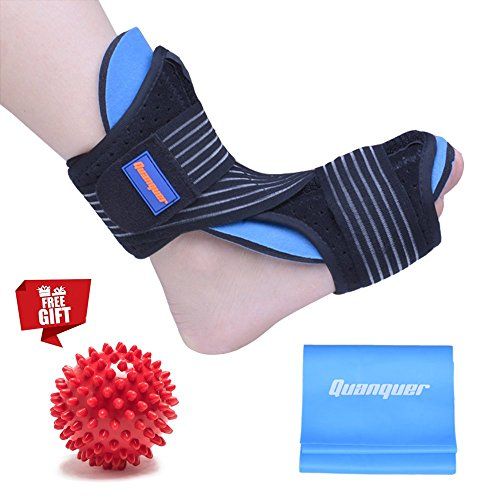
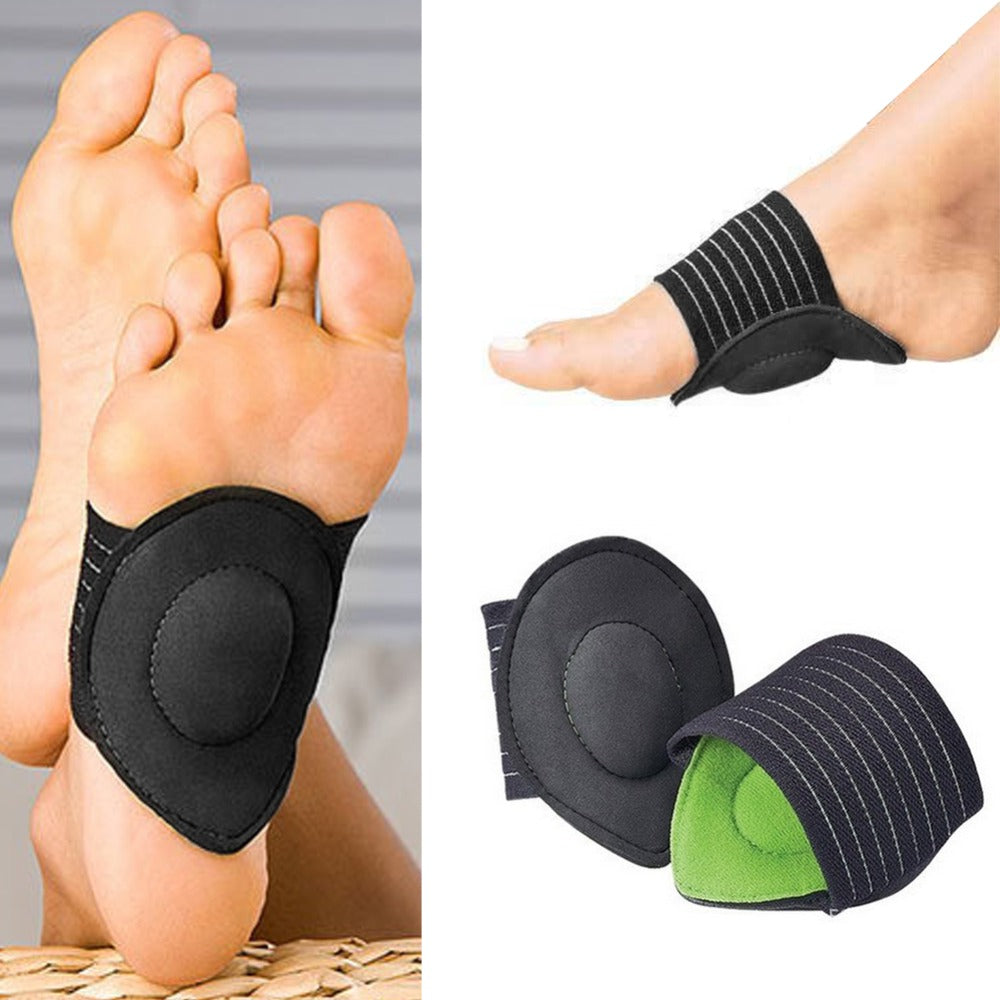




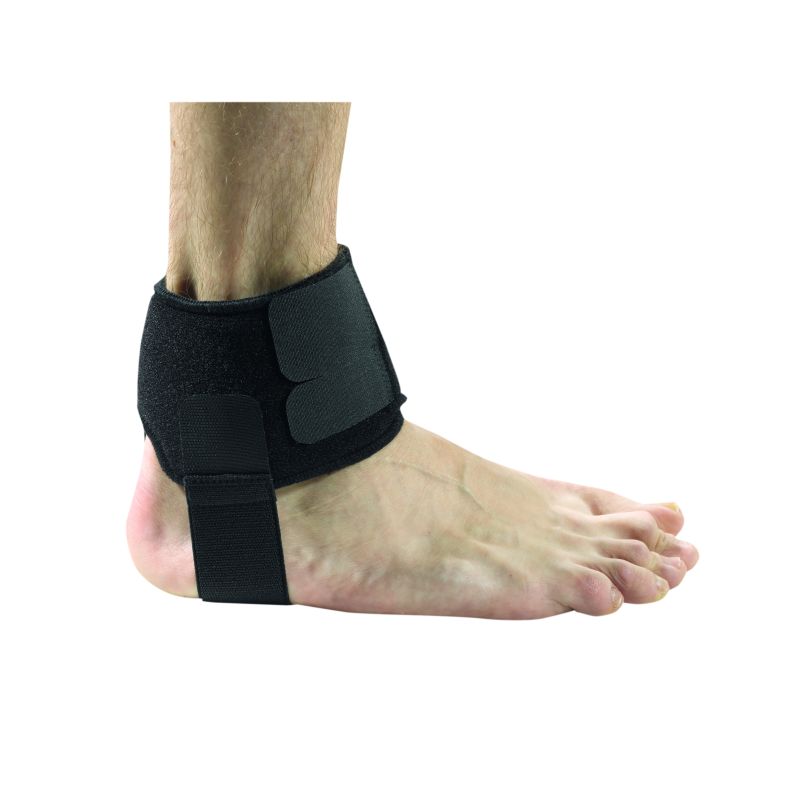

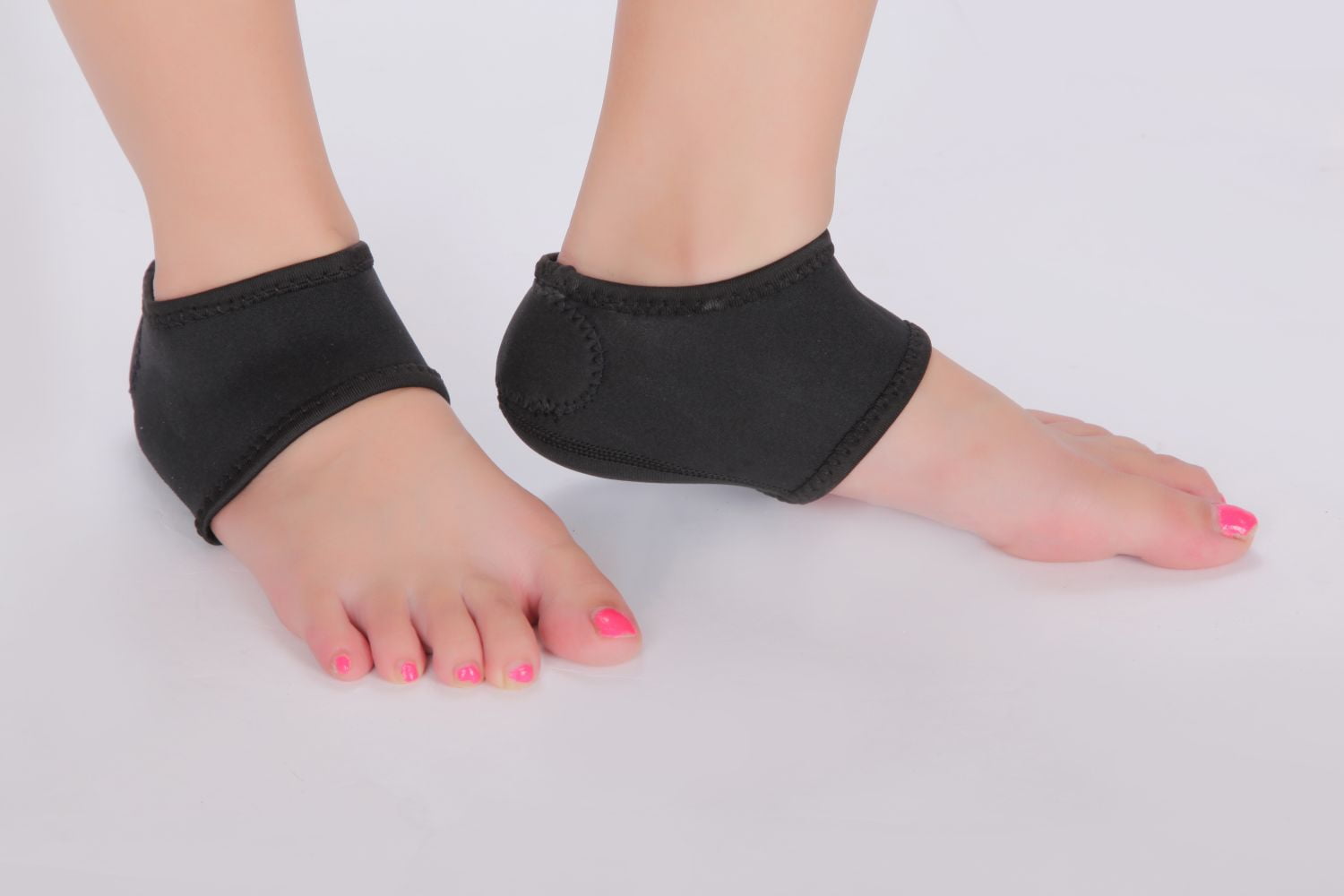







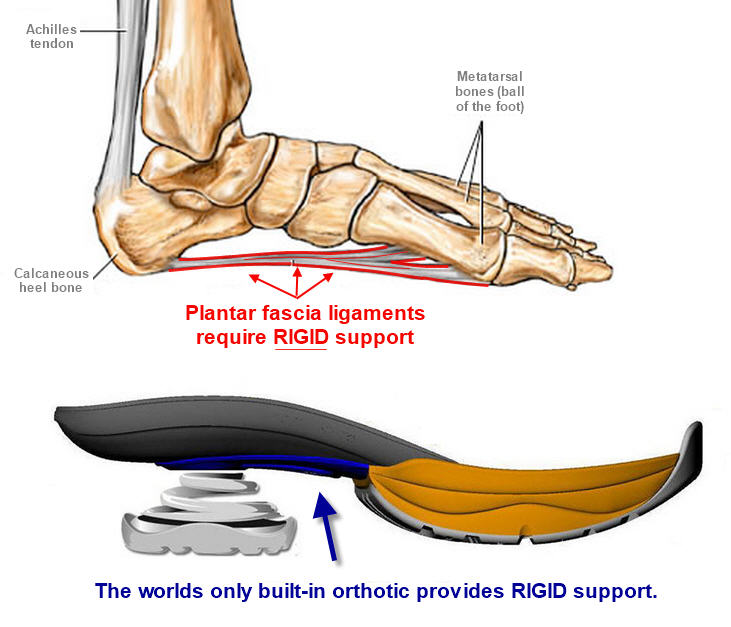









No comments:
Post a Comment
Note: Only a member of this blog may post a comment.